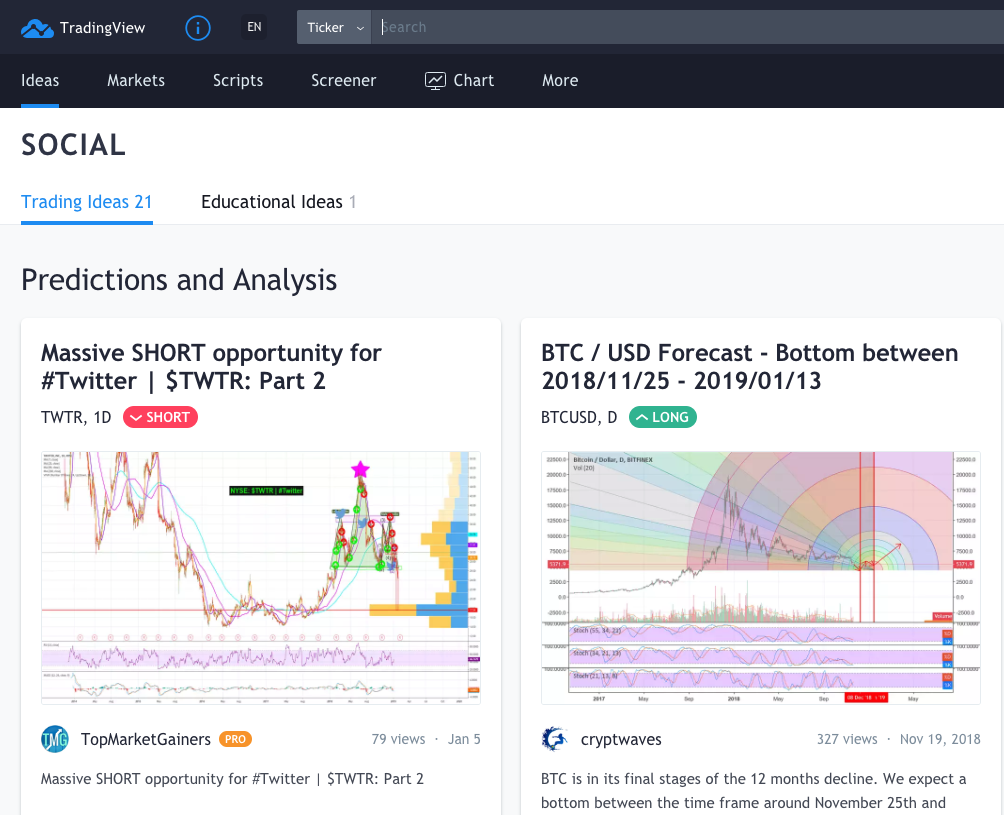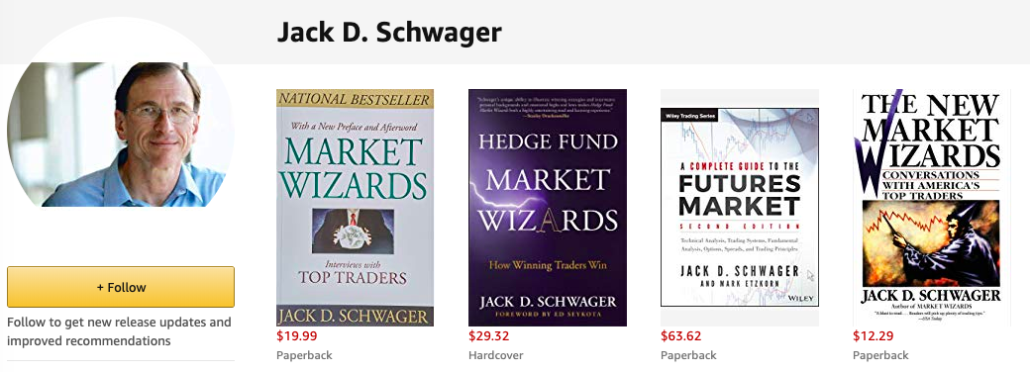Whether you want to generate extra income, quit your current 9 to 5 or save for retirement, Forex Trading can be a great solution.
But hey …. it’s not an easy task.
So to get started as Forex trader, you have to start by educating yourself.
There are many steps you can take, and very often you won’t know where to start.
This guide is here to help you navigate the Forex investing world.
It will show you where to start, give you lots of advice and point to some free online resources along with some more elaborate options.
Learning Forex trading can feel overwhelming, but if you take it one step at a time it is quite accessible and could end up being very rewarding.
Don’t forget they key to your success will often reside 70% in your psychological abilities (and money management) and 30% in the strategies and techniques you will acquire.
So here are 12 ways you can learn Forex trading.
1. Learn the basics of Forex trading from free online resources
Here’s the good news, there’s a wealth of free education available.
Start by reading this Beginner’s Guide to Forex Trading from Investopedia.
It is extremely well written, simple to understand and covers all the basics : what is the Forex Market, Forex for Speculation, Why we can Trade Currencies, A Brief History of Forex, Currency as an Asset Class, Forex Trading Risks, and a host of other resources.
Another great free resource that I highly recommend is the « School of Pipsology » over at Babypips.com. The course is 100% free, very detailed, extremely clear, definitely a place you could start from.

The Balance is another great website with free resources, from Basic to Advanced skills.
2. Read the best Forex trading books for beginners
Reading books is the second thing you should definitely consider.
Books are a cheap, well structured and invaluable way to learn from the best.
To me, a very good pick is Kathleen Brooks and Brian Dolan’s book : Currency Trading for dummies.
The book is very hands-on and a super friendly guide to how the Forex market works and how you can become part of it. It has had a great rating on Amazon (4.3 out of 5) for several years.
Alternatively, I’ve also reviewed the The Top 10 Day Trading Books or The Top 12 Investment Books for beginners, they are not specifically oriented towards Forex but could provide useful insights on the trading world. Check them out.
But if you’re already a seasoned trader or you want to take things a little further, I strongly recommend reading Karen Peloille’s fantastic book : Trading with Ichimoku.
Karen Peloille is an outstanding French trader specialized in Ichimoku, her methods to trade Forex are very efficient if you’re willing to put in the time and effort.
If you want to know more about the Ichimoku system, you can also read my post about My Simplified Ichimoku Strategy.
3. Open an account with an online Forex broker
Once you’ve caught the basics of Forex Trading, it’s time to open an account.
The first criteria to consider before opening a Forex Trading account is the place where you live.
A great online resource to select a broker is stockbrokers.com. It offers extremely thorough reviews of online brokers, by criteria (platform, tools, fees,…). Or you can also check out Forexbrokers.com, they have up to date review of all the best brokers.
A few brokers if you live in the US
If you live in the US there are three brokers I particularly recommend:
- the first one is TD Ameritrade, with its acclaimed platform Thinkorswim
- Robinhood, an ultra low-cost option and relative newbie in the brokerage world, but extremely aggressive on tariffs and mobile friendly. I have written a Complete Robinhood review if you’re interested.
Another very good option is IG
IG is another excellent broker with a super platform, it is regulated all over the Globe.
4. Discover your style of trading
Before you start buying your first currency pairs, you have to make an important decision: what trading style will you adopt ?
Usually, this will be a factor of several things: your personality, the funds you have, your appetite for risk, expected returns, your resistance to stress and the time you are willing to devote to trading.
But most of all, trading styles are usually defined by the length of time that trades are held for.
Here’s a brief overview of your different options, there are mainly four broad trading styles:
Scalping
The most extreme form of trading, with trades that last from a few seconds to a few minutes.
The idea is to accumulate micro-profits, until they add up to significant gains.
It is definitely a stressful trading style, challenging and usually reserved to experienced traders.
You need to be able to make split second decisions, without hesitation, and in a repeated manner.
Scalping requires you to remain focused for long hours.
I would not recommend it as a trading style for beginners, however if you want to give it a try, you can check out my complete Scalping Strategy Guide.
This trading style is quite appropriate for impatient people. But note that in the long run it is very tiring and stressful.
Also important is to find a broker with the lowest possible transaction costs (called spread in Forex terminology) because the repeated positions you will take can quickly add up.
Important : Scalping is great for those who want to trade the news, one of the most efficient trading methods on the Forex Market, taking advantage of economic calendar announcements to profit from short runs in forex pairs.
Trading the news and Fundamental Analysis
The best place to learn News Trading is over at Forex Source, profiting from Jarratt Davis’ experience as a leading Forex Trader. You must absolutely download their free PDF to Master Fundamental Analysis, there’s nothing better out there.

Day Trading
Trades are held anywhere from a few minutes to a couple of hours.
The main principle is that you hold no overnight position, so day trading is appropriate for people who want to avoid the stress of keeping open positions.
Often presented as an easy way to get rich, a lot of day traders are severely impacted by the importance of transaction costs so if this is the style your elect be careful to choose a competitive broker with low spreads.
Swing Trading
Swing trades are usually held for several days, so this is a style for patient people, who can let a trade unfold over several days.
This kind of trading requires larger stop losses, to become a swing trader you need to be able to manage trades that go into negative territory for some time.
It is a style recommended for aspiring traders, but you need to be a disciplined type of person in order to avoid constantly adjusting your position and sticking to your strategy.
Buy and Hold or Position Trading
This type of trading consists in holding positions from a few days to several years.
Usually position trades are taken based on fundamental analysis, contrary to “shorter” trading styles who rely quite a lot on technical analysis.
You need to be very patient, to stick to your strategy and not be too influenced by general opinion or news events.
Whatever trading style you choose, remaining consistent and faithful to your system will be key.
Too many traders will switch styles as soon as they face a losing streak, thinking it is not optimal for them.
But it’s proven, constantly switching styles will take you nowhere and most probably deplete your account.
Another trading style involves what is called Carry Trade, the ability to play on the differentials of interest rates earned or paid on specific currencies.
Here’s a Carry Trade strategy if you’re interested.
Part 1
Part 2
5. Start trading with a demo account (also called paper trading)
Getting started on a Live account can be risky, especially on the Forex market where you need to be well educated before you get started.
If you‘re still learning, uneasy with order entry and trade management, or simply not decided on your trading style, then go with a demo account.
Thankfully, most brokers will give you the option to trade on such an account. But remember that a demo account will never entirely put you in the psychological conditions of live trading, however they’re a great way to start getting a feel for markets, use the trading platform and decide on your trading strategy.
You can try opening an account at eToro, a very user friendly trading platform available in many countries.
If your broker doesn’t offer demo accounts, you can try to open one at TradingView.com, an amazing charting platform that also acts as a social network.

Last but not least, you can also try the Metatrader 4 platform, very popular with Forex Traders for its versatility and interface.

6. Read free articles on Forex Trading
Quite a vast amount of literature is regularly produced on Forex trading, however regular articles stand out in terms of quality, usually from a few websites.
One of the leading websites for Forex market news is dailyfx.com. It provides the latest info on world markets, facts that affect currencies and even analyst tips.
Forex news can also be found at fxstreet.com or forex.com .
Bloomberg is another very good source, with daily articles and news on the world’s currency markets in their Currencies section.
More specialized articles can be found on seekingalpha. Some of these sites will enable you to subscribe to RSS threads, providing you with a regular feed of their articles.
7. Buy an online Forex trading course
Once you have given yourself a basic education around Forex, there is a possibility that you’ll want to take things a step further. Online courses can provide you more advanced techniques, and Udemy is a wonderful platform for that.
Some of the courses are very affordable (as low as $10.99) and can provide you very valuable tools and techniques. While choosing an online course, I recommend that you carefully read the reviews so that you choose the ones with an established reputation.
The Online Trading Academy (OTA) is another well-known provider of trading classes and courses, they have some fantastic trading material but some of the courses are priced on the higher side.
8. Find a strategy that fits you
Now that you have an idea of your trading style, you’ve opened a Demo or a Live account, you want to get going and start trading Forex.
Well, you are going to need a strategy, ie a systematic way of entering the market and managing your trades.
A lot of strategies can be accessed for free at Tradingstrategyguides.com.
You’ll have more than you need, however you won’t be able to completely judge which ones are successful and which ones are not. That’s the whole idea behind a demo account, you can test them out.
I also have an article for an Ichimoku Strategy that I’ve been using quite a lot, it is very adapted to Forex but can be applied to mostly any asset and has given me a good success rate so far.
If you want to Trade the News, one of the best ways to get going is to learn from Jarratt Davis over at Trading Source :
9. Use a free Charting Platform
A great way to find trade ideas and plan your trades, or just analyze the market, is to use some online charting platforms.
The most powerful is definitely TradingView, I have written a complete Beginners Guide here.

This HTML5 platform is fantastic and delivers a host of powerful tools, I highly recommend it.
10. Emulate the greatest traders
Learning from the greatest traders is both inspiring and thought provoking.
Along the years, I have researched literally hundreds of traders and strategies, and I’ve shortlisted the best of them.
They’re not all well-known, and you can find them in my article on emulating the best Forex traders.
A great way to learn more about these amazing traders is to read the Market Wizards series of books written by Jack D. Schwager.
Discover their approach, psychology, and sometimes even the techniques and strategies that made them so successful.
11. Find some trade ideas using social trading
Exchanging trading ideas with other investors is a great way to break the isolation.
A few platforms will allow you to do that.
One of the best options is to use the social networking capabilities of TradingView.
This tool is amazing, it integrates one of the most powerful charting platforms with social trading, screeners, and it even has broker integration for those who want to trade from the charts.

Read my complete TradingView Beginners Guide here.
Lastly, there are brokers totally oriented towards social trading. eToro is the most well-known, allowing you to connect with other traders, discuss trading strategies and even use the CopyTrader technology to automatically copy the trading performance of the best traders.
12. Learn to trade Forex with Youtube videos
Videos are a great way to learn, and there is some very valuable content available free on Youtube.
Here’s a series of very useful videos, tackling the basics of Forex along with some psychological aspects of Forex Trading.
A video by Jayson Graystone : 10 ways to Learn Forex Trading
A good course on Forex Trading by Adam Khoo
Forex News Trading with Jarratt Davis – probably THE best source there is for aspiring Forex Traders
If you want to trade like Jarratt Davis, you can learn from this course, probably one of the most serious programs out there.
Conclusion
I’ve come to the end of this Beginner’s Guide to Forex Trading.
I hope you found it useful, forgive me if it’s a bit long. Trading Forex can be very rewarding and I definitely recommend you to start step by step so that you build on a solid foundation.
If you have any specific question or would like to know more about any of these steps, please drop a question in the comment box below, I’ll be happy to elaborate or provide an answer.










Interesting point of view, especially about Buy and Hold trading!
By far the two most important steps have been what I learnt from Jarratt Davis and the setup of my Ichimoku Strategy. http://tradingtools.net/simpl…
Absolutely, this is why it’s recommended to only paper trade for only a few months
Wow, this sure covered a lot. Looks like there is quite a bit to understand to get your hands around forex trading. I like the demo account option to help new folks get more comfortable with the process. I’m assuming it is just a safe zone to practice where you aren’t at risk of losing anything but let’s you practice and get more comfortable figuring out what investment style you prefer. I do agree with you though – it will help to prepare you but can’t give you the complete experience of trading live.
Hello John, I’ve always been fascinated by the idea of trading stocks with a relatively decent level of expertise. I’m sure like every other endeavor, it’ll require some training and of course, deliberate practice. Now, I have to say, these tips would actually go a long way in helping with the learning curve. I’ve come to realize that I learn better with text than visuals. So I guess the next logical step is to get my hands on Kathleen and Brian’s book.
Thanks for sharing
I enjoyed reading something new that I did not know about in forex trading. This is one of the most in depth articals I’ve read. You actually show the steps you need to take to start forex trading. Which of these steps has been the most helpful to you in terms of your forex trading success?